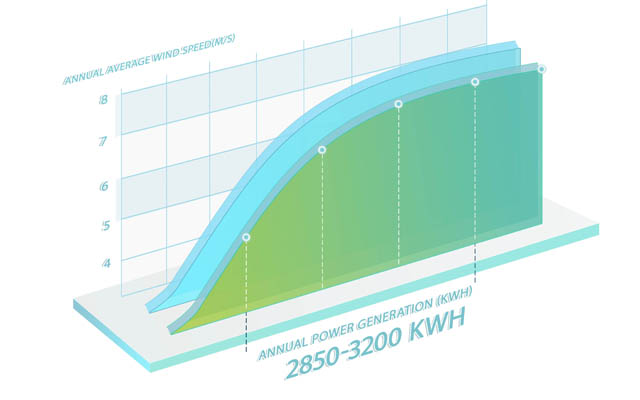When investing in a wind turbine, one of the most critical decisions is determining the right power output. A well-matched turbine not only improves energy efficiency but also ensures long-term system stability and cost-effectiveness. Whether you’re powering a remote cabin, a factory, or developing a large-scale wind farm, here’s how to choose the optimal wind turbine capacity based on your actual needs and local wind conditions.
1. Define Your Application and Power Demand
A. Grid-Tied vs. Off-Grid Systems
-
Grid-Tied Systems: These are connected to the public grid and require compatibility with grid regulations. In this case, the wind turbine’s rated power should be aligned with the grid’s load handling and feed-in capacity.
-
Off-Grid Systems: Ideal for remote areas without grid access. Power selection should cover daily power consumption, peak load requirements, and battery storage capacity.
Example: For a rural home consuming ~5kWh/day, a 1–3kW wind turbine is often sufficient, assuming consistent wind speeds and a backup battery bank.
B. Load Characteristics
-
Continuous Loads (e.g., industrial equipment): Require stable power output. Consider multiple smaller turbines in parallel for redundancy and reliability.
-
Intermittent Loads (e.g., streetlights, pumps): A single higher-rated turbine with battery support may be more efficient.
2. Evaluate Your Wind Resource
A. Understand Key Wind Speeds
-
Cut-in Speed (~3–4 m/s): Minimum wind speed at which the turbine starts generating power.
-
Rated Speed (~8–12 m/s): Wind speed at which the turbine reaches its full rated output.
-
Cut-out Speed (~25 m/s): Maximum safe wind speed before the turbine automatically shuts down to avoid damage.
Gather average annual wind speed, wind direction, and turbulence intensity data for your location. This helps match turbine characteristics to actual wind behavior.
B. Use Wind Resource Assessment Tools
-
Software Options: Use professional simulation tools like WAsP, WindPro, or HOMER to model wind patterns and predict energy output.
-
Historical Data: National meteorological stations often provide wind maps and long-term wind speed records.
3. Match Wind Turbine Power with Wind Conditions
A. Power Curve Alignment
A turbine’s power curve shows the relationship between wind speed and power output. Choose a turbine whose curve matches your local wind profile.
-
In low-wind areas (average <5 m/s): Select turbines with low cut-in speeds and optimized for low-speed efficiency (e.g., 100kW units with 2.5 m/s cut-in).
-
In high-wind regions: Larger turbines with higher rated wind speeds and reinforced structures are more suitable.
B. Capacity Factor Consideration
The capacity factor indicates the efficiency of a turbine and is calculated as:Actual annual energy output / (Rated power × 8760 hours)
Typical values:
-
Offshore wind farms: 40–50%
-
Onshore wind farms: 30–40%
-
Small wind systems: 15–25% depending on site conditions
If your estimated capacity factor is too low, consider adjusting turbine size, changing the model, or repositioning the site.
4. Typical Power Ratings by Application Scenario
| Application Scenario | Recommended Power Range | Key Considerations |
|---|---|---|
| Remote home or cabin | 1 – 10 kW | Daily use (kWh), peak load, battery backup |
| Small/Medium-sized factory | 50 – 500 kW | Continuous load, power stability |
| Onshore commercial wind farm | 2 – 5 MW/turbine | Grid connection, land use, installation cost |
| Offshore wind farm | 8 – 15 MW/turbine | Water depth, typhoon risk, vessel access |
Each scenario involves different constraints—from available land to wind turbulence, logistics, and government regulations.
5. Additional Factors to Consider
-
Cost vs. Output: A higher-rated turbine costs more upfront but may provide lower cost per kWh over time.
-
Permitting and Incentives: Some regions provide financial support for systems under a specific capacity (e.g., <100kW).
-
Maintenance Requirements: Larger turbines require more complex service and access planning.
-
Transport and Installation: For remote areas, consider the size and weight of the turbine components.

